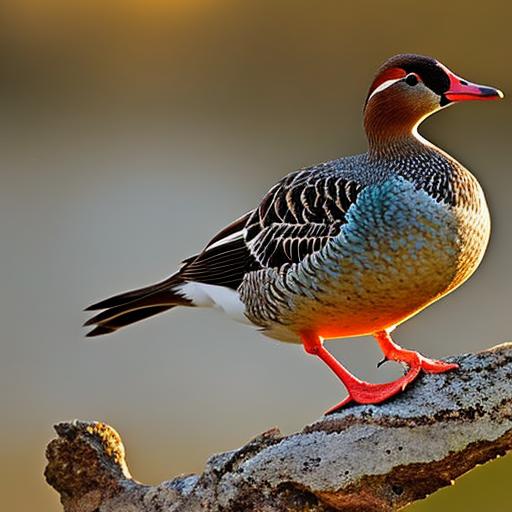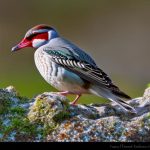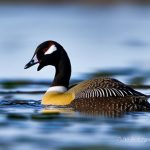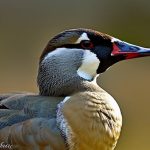Geese can be a major nuisance in many areas, causing damage to property, leaving behind droppings, and even posing a safety risk. As a result, finding effective methods to deter geese is crucial. One method that has gained popularity in recent years is the use of string as a goose deterrent. In this article, we will explore the behavior of geese, the different types of string available for deterrence, factors to consider when determining string height, the importance of consistent string placement, how to properly tie string for maximum effectiveness, using decoys in conjunction with string, adjusting string height based on goose activity levels, maintaining string for long-term goose management, addressing potential safety concerns with string placement, when to consider alternative methods for goose deterrence, and conclude with a summary of the key points.
Key Takeaways
- Geese are social animals and tend to congregate in areas with water and food sources.
- Monofilament fishing line is the most effective type of string for goose deterrence.
- String should be placed at a height of 2-3 feet to prevent geese from landing.
- Consistent string placement is important to create a physical barrier that geese will avoid.
- Knots should be tied tightly and close to the ground for maximum effectiveness.
- Decoys can be used in conjunction with string to create a more realistic deterrent.
- String height may need to be adjusted based on the activity levels of geese in the area.
- Regular maintenance of string is necessary for long-term goose management.
- Safety concerns should be addressed by placing string in areas where it will not pose a risk to humans or wildlife.
- Alternative methods, such as habitat modification or professional wildlife management, may be necessary in certain situations.
Understanding the behavior of geese
Geese are social birds that often gather in large flocks. They are known for their honking calls and distinctive V-shaped flight patterns. While geese can be beautiful to observe in their natural habitat, they can become a nuisance when they invade urban areas or private properties. Geese are attracted to areas with open water and lush grass, making parks, golf courses, and residential lawns prime targets. They can cause damage to lawns by overgrazing and leaving behind droppings that can be unsightly and unsanitary. Additionally, geese can become aggressive during nesting season and may attack humans or pets that come too close to their nests.
Understanding the behavior of geese is crucial when choosing a deterrent method. Geese are highly adaptable creatures and can quickly become accustomed to certain deterrents if they are not effective. Therefore, it is important to choose a deterrent method that disrupts their behavior patterns and makes the area less appealing to them.
Choosing the right type of string for goose deterrence
When it comes to using string as a goose deterrent, there are several options to consider. The most common types of string used for this purpose are monofilament fishing line, twine, and reflective tape. Each type of string has its pros and cons.
Monofilament fishing line is a popular choice because it is virtually invisible, making it less obtrusive in outdoor spaces. It is also durable and can withstand various weather conditions. However, it may not be as effective in windy areas as it can become tangled or break.
Twine is another option that is commonly used for goose deterrence. It is affordable and easy to find in most hardware stores. Twine is also durable and can withstand outdoor conditions. However, it may not be as effective as monofilament fishing line in terms of visibility.
Reflective tape is a newer option that has gained popularity in recent years. It is made of a material that reflects light, creating a visual deterrent for geese. Reflective tape can be effective in deterring geese, especially in areas with high levels of sunlight. However, it may not be as durable as other types of string and may need to be replaced more frequently.
Based on these considerations, the best type of string to use for goose deterrence would be monofilament fishing line. It offers the best combination of durability and visibility, making it an effective deterrent for geese.
Factors to consider when determining string height for geese
The height at which the string is placed plays a crucial role in deterring geese. Geese have a natural instinct to avoid obstacles in their flight path, so placing the string at the right height can effectively deter them from landing or grazing in an area.
When determining the appropriate height for string placement, there are several factors to consider. Firstly, the height should be low enough to disrupt the flight path of geese but high enough to prevent them from easily walking under or over the string. A height of around 2 to 3 feet is generally recommended.
Secondly, the height should be consistent throughout the area where geese are being deterred. Inconsistently placed string may confuse geese and make the deterrent less effective. It is important to create a clear barrier that geese can easily recognize and avoid.
Lastly, the height should take into account the specific behavior of the geese in the area. Observing their flight patterns and grazing habits can provide valuable insights into where the string should be placed. For example, if geese tend to fly low when approaching an area, the string should be placed at a lower height to effectively deter them.
The importance of consistent string placement
Consistent string placement is crucial for effective goose deterrence. Geese are intelligent creatures and can quickly learn to navigate around obstacles if they are not consistently present. Therefore, it is important to ensure that the string is consistently placed throughout the area where geese are being deterred.
Consistent string placement creates a clear barrier that geese can easily recognize and avoid. It disrupts their flight patterns and makes the area less appealing to them. Inconsistently placed string may confuse geese and make them more likely to attempt to land or graze in the area.
To ensure consistent string placement, it is recommended to regularly inspect the area and make any necessary adjustments. This includes checking for any areas where the string may have become tangled or broken and replacing it as needed. Additionally, it is important to communicate with others who may be responsible for maintaining the area to ensure that everyone is aware of the importance of consistent string placement.
How to properly tie string for maximum effectiveness

Properly tying the string is crucial for maximum effectiveness as a goose deterrent. The goal is to create a clear barrier that disrupts the flight path of geese and makes the area less appealing to them.
To tie the string, start by attaching one end to a sturdy anchor point, such as a tree or post. Then, stretch the string across the area where geese are being deterred and attach the other end to another anchor point. It is important to ensure that the string is taut and at the appropriate height.
When tying the string, it is recommended to use a secure knot that will not easily come undone. The most common knot used for this purpose is the double half hitch knot. This knot is easy to tie and provides a secure hold.
To tie a double half hitch knot, start by wrapping the string around the anchor point. Then, bring the end of the string over and under the main part of the string, creating a loop. Finally, pass the end of the string through the loop and tighten the knot. Repeat this process for each anchor point.
It is important to avoid common mistakes when tying the string. One common mistake is tying the string too loosely, which can allow geese to easily pass under or over it. Another common mistake is tying the string too tightly, which can cause it to break or become tangled. It is important to find a balance between tension and flexibility when tying the string.
Using decoys in conjunction with string for goose control
Using decoys in conjunction with string can enhance the effectiveness of goose deterrence. Decoys create a visual deterrent for geese and can make an area appear less appealing to them.
There are several types of decoys that can be used for goose control. The most common type is a replica of a goose or other bird species that geese are naturally wary of. These decoys can be placed strategically throughout the area where geese are being deterred to create a visual deterrent.
Another type of decoy that can be effective is a predator decoy. Geese are naturally wary of predators, so placing decoys that resemble predators, such as owls or coyotes, can deter them from landing or grazing in an area.
When using decoys in conjunction with string, it is important to strategically place them to create a clear barrier that geese can easily recognize and avoid. Decoys should be placed at regular intervals along the string to create a visual deterrent.
It is also important to regularly inspect and maintain the decoys to ensure their effectiveness. This includes cleaning them to remove any dirt or debris and repositioning them if necessary. Additionally, it is recommended to periodically change the location of the decoys to prevent geese from becoming accustomed to their presence.
Adjusting string height based on goose activity levels
Monitoring goose activity levels and adjusting string height accordingly is crucial for effective goose deterrence. Geese are intelligent creatures and can quickly adapt to certain deterrents if they are not effective. Therefore, it is important to regularly assess the effectiveness of the string and make any necessary adjustments.
When monitoring goose activity levels, it is important to observe their flight patterns and grazing habits. If geese are consistently flying over or grazing under the string, it may be necessary to adjust the height to create a more effective barrier.
Adjusting string height can be done by simply raising or lowering the anchor points. It is recommended to make small adjustments at a time and observe the behavior of the geese before making further adjustments. This allows for fine-tuning of the deterrent method and ensures maximum effectiveness.
It is also important to communicate with others who may be responsible for maintaining the area to ensure that everyone is aware of the importance of monitoring goose activity levels and adjusting string height accordingly. Regular communication and collaboration can help ensure that the deterrent method remains effective in deterring geese.
Maintaining string for long-term goose management
Maintaining the string is crucial for long-term goose management. Over time, the string may become tangled, broken, or loose, reducing its effectiveness as a deterrent. Therefore, it is important to regularly inspect and maintain the string to ensure its effectiveness.
Regular inspections should be conducted to check for any areas where the string may have become tangled or broken. These areas should be repaired or replaced as needed to maintain a clear barrier that geese can easily recognize and avoid.
Additionally, it is important to periodically replace the string to ensure its durability. Over time, the string may become worn or weakened by weather conditions. By replacing the string on a regular basis, its effectiveness as a goose deterrent can be maintained.
It is also recommended to clean the string periodically to remove any dirt or debris that may accumulate on its surface. This can help maintain its visibility and ensure that it remains an effective deterrent for geese.
Addressing potential safety concerns with string placement
While using string as a goose deterrent can be effective, there are potential safety concerns that need to be addressed. The string can pose a tripping hazard for humans and pets if it is not properly placed or clearly marked.
To address these safety concerns, it is important to ensure that the string is placed at an appropriate height and clearly marked with signs or flags. This can help alert people to the presence of the string and prevent accidents.
Additionally, it is important to regularly inspect the area for any potential safety hazards and make any necessary adjustments. This includes checking for any areas where the string may have become loose or tangled and repositioning it as needed.
Regular communication with others who may be responsible for maintaining the area is also important to ensure that everyone is aware of the potential safety concerns associated with string placement and takes appropriate measures to address them.
When to consider alternative methods for goose deterrence
While using string as a goose deterrent can be effective in many situations, there may be instances where alternative methods are more appropriate. For example, if geese are consistently flying over or grazing under the string despite adjustments to height, it may be necessary to consider alternative methods.
One alternative method for goose deterrence is the use of sonic devices. These devices emit sounds that are unpleasant to geese and can deter them from landing or grazing in an area. Sonic devices can be particularly effective in areas with high levels of goose activity.
Another alternative method is the use of chemical deterrents. These deterrents are applied to the grass or other surfaces and create an unpleasant taste or smell for geese. Chemical deterrents can be effective in deterring geese from landing or grazing in an area, but they may need to be reapplied periodically.
It is important to carefully consider the specific needs and challenges of the area when determining the most appropriate deterrent method. Consulting with a professional wildlife management expert can provide valuable insights and guidance in choosing the right method for goose deterrence.
In conclusion, using string as a goose deterrent can be an effective method for managing geese in urban areas or private properties. Understanding the behavior of geese, choosing the right type of string, determining string height, ensuring consistent string placement, properly tying the string, using decoys in conjunction with string, adjusting string height based on goose activity levels, maintaining string for long-term goose management, addressing potential safety concerns, considering alternative methods when necessary, are all important factors to consider when using string as a goose deterrent. By implementing these strategies and regularly monitoring and maintaining the deterrent method, geese can be effectively deterred from causing damage and becoming a nuisance.
If you’re interested in learning more about geese and their care, you might find this article on “How to Care for Goslings” from Poultry Wizard helpful. It provides valuable information on raising and breeding geese, including tips on feeding, housing, and general care. Additionally, if you’re curious about turkeys and their housing needs, you can check out the article “Do Turkeys Need a Coop?” Also, if you’re considering hatching goose eggs, you may want to read the article “What is the Incubation Period for Goose Eggs?” These resources will provide you with a comprehensive understanding of geese and their requirements.
FAQs
What is the purpose of putting string to keep geese away?
The purpose of putting string to keep geese away is to create a physical barrier that prevents geese from entering a specific area.
How does string keep geese away?
String keeps geese away by creating a visual barrier that makes it difficult for geese to navigate through the area. Geese are hesitant to fly through or land in areas where they cannot see a clear path.
How tall should the string be to keep geese away?
The string should be at least 2-3 feet tall to keep geese away. This height is enough to create a visual barrier that makes it difficult for geese to navigate through the area.
What type of string should be used to keep geese away?
A durable and weather-resistant string should be used to keep geese away. Nylon or polypropylene rope are good options as they are strong and can withstand outdoor conditions.
Where should the string be placed to keep geese away?
The string should be placed around the perimeter of the area where geese are not wanted. This can include gardens, ponds, or other areas where geese may congregate.
Are there any other methods to keep geese away?
Other methods to keep geese away include using decoys, applying repellents, or using noise-making devices. However, these methods may not be as effective as creating a physical barrier with string.
Meet Walter, the feathered-friend fanatic of Florida! Nestled in the sunshine state, Walter struts through life with his feathered companions, clucking his way to happiness. With a coop that’s fancier than a five-star hotel, he’s the Don Juan of the chicken world. When he’s not teaching his hens to do the cha-cha, you’ll find him in a heated debate with his prized rooster, Sir Clucks-a-Lot. Walter’s poultry passion is no yolk; he’s the sunny-side-up guy you never knew you needed in your flock of friends!







